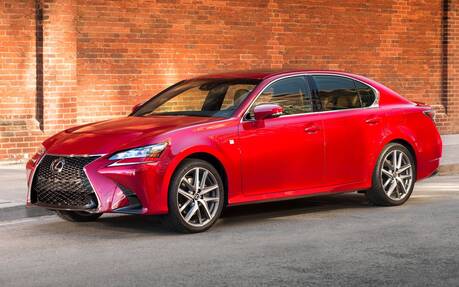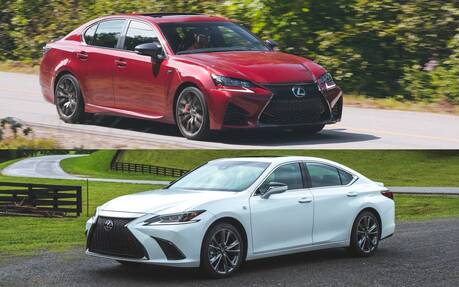Pre-Owned Lexus GS or ES: What's the Difference?
There was a time when mid-size sedans were very popular. Lexus even thought it would be good to offer two models: the ES and the GS. With the decline of this car segment, the company decided to ditch the GS at the end of model year 2020 to focus on the ES instead, which had just been completely redesigned for 2019.
They are both suitable choices for drivers who give priority to comfort, silence, refinement, and of course, reliability. But what exactly is the difference between these two cars that are oddly similar on the outside?
First, the Lexus ES is a little less spacious and luxurious. It comes just before the Lexus IS in the model range. The lacking space was addressed with the seventh generation, however, so there will be no sacrifice to make if you buy a recent ES. Depending on the trim, its trunk is still 50 to 100 litres smaller than the GS’s, though.

The ES had to wait until 2019 to get its F SPORT package, which boosted its looks and its road handling a little bit. As for the interior, both sedans featured a very similar controls and screens layout, until the ES got its update.
The place where you’ll find the biggest difference between the ES and the GS is under the hood. The first never really tried to compete with the German queens, that’s why it offers more limited and less powerful mechanical options. The naturally aspirated 3.5-litre V6 produced 268 horsepower before 2019 and 302 afterwards, while its 6-speed automatic transmission gained two more gears for a total of eight. Also note that the all-wheel drive wasn’t an option for the former generation.
As for the hybrid version, its four-cylinder engine (ES 300h) generates 200 or 215 horsepower depending on the year, and its average consumption is generally under 6 L/100 km.
The more muscular GS had the same 3.5-litre V6, but it had been increased to 311 horsepower, and the all-wheel drive came as standard equipment. The hybrid model, called GS 450h, combined the V6 with a powerful electric motor, for a total output of 338 horsepower, in exchange for a 7.5-L/100 km consumption. These numbers are pretty good ones.

And that’s not all. In order to attract the high-performance crowd, Lexus also offered a mighty GS F driven by a naturally aspirated 5.0-litre V8 with 467 horsepower, which were transmitted to the real wheels only. In the luxury sports sedan world, it was a well-kept secret, if you will, mainly because its exterior showed no sign of its power.
In short, the Lexus ES and GS are almost twin sisters, but we found significant differences in their vocation, equipment, and mechanics. Our best advice is to try them both one after the other to get a better idea.
